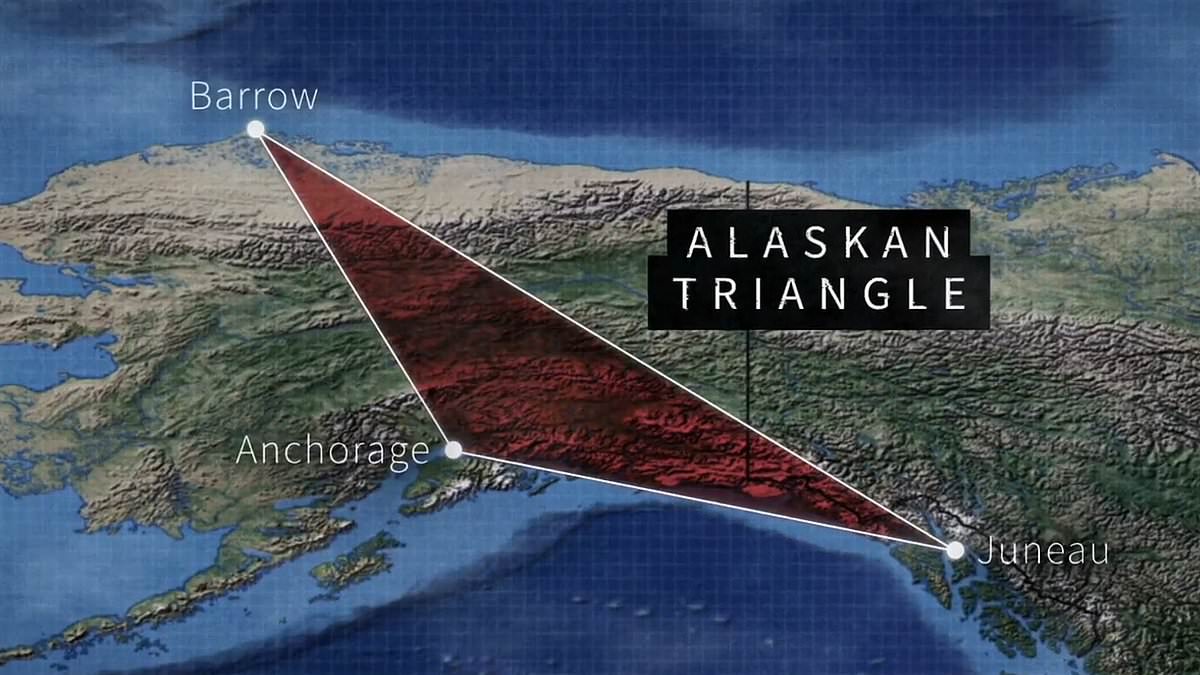An area of Alaska near which a Bering jet has vanished with ten people on board has a chilling history of disappearances.
The Alaskan Triangle, a large remote area between Anchorage, Juneau and Utqiagvik, has fascinated scientists and theorists alike for years – similar to the more well-known Bermuda Triangle
The area contains some of the most unforgiving wilderness in North America and its sparse population has only increased its spooky reputation.
The region has been the home to some 20,000 people disappearing since the 1970s, according to a 2022 report by The History Channel.
In 1972 House Majority Leader Hale Boggs and Congressman Nick Begich disappeared while flying from Anchorage to Juneau.
The plane seemingly vanished into thin air and despite a massive search and rescue mission no bodies or even a wreckage has ever been found.
The 1972 incident is eerily similar to the ongoing search for the missing Bering flight that vanished while travelling to Nome from Unalakleet on Thursday night.
Exact coordinates are still being established for the flight, with its last known contact being with Anchorage Air Traffic Control.
The History Channel report that the region has been the home to some 20,000 people disappearing since the 1970s.
Researcher Ken Gerhard spoke with the History Channel as part of their coverage into the Alaskan Triangle.
He said: ‘What I found when I was doing my research in the Alaskan Triangle, was that a number of these missing person cases legitimately could not be solved.
‘This wasn’t just a case of someone being mauled by a bear or falling into a crevasse, I mean, these were often people that were going about their daily lives.
‘They weren’t out on some grand adventure and yet ultimately, they disappeared for no good reason.’
More recently, Joseph Balderas also vanished without a trace in 2016, with Florence Okpealuk, 33, also going missing in August 2020.
Like others, they two disappeared without a trace – stumping local law enforcement and worrying fellow residents.
Balderas was last seen on June 24 of that year and was reported missing after failing to show up for work.
His truck was then found abandoned near Nome, it was unlocked and inside was a backpack that contained his fishing equipment, according to The Independent.
Authorities hunted for days for any sign of Calderas, a Texas native who moved to Alaska for a job, but the search was abandoned after a lack of evidence.
Cops in the area interviewed his roommate after he allegedly lied to authorities about his movements, but a search of their home turned up no evidence of foul play.
Private investigator Andy Klamser, who was brought in by his family, ruled out theories of suicide or bear attack.
‘Typically, you know, if there was a bear attack there would be evidence of it,’ he told the outlet.
‘With the number of people that they had out there on foot, on 4-wheelers and in the air and with scent dogs, it just seems like that’s less likely.’
Okpealuk also similarly vanished from Nome, with her shoes, socks and jacket being recovered by authorities after being last seen leaving a tent outside of Nome.
According to the FBI, there were a reported 24 disappearances from the town of Nome, where the missing plane had been travelling to.
Okpealuk’s case is one of thousands in the Missing and Murderous Indigenous Peoples crisis (MMIP), according to local outlets.
As for the missing Bering Air Caravan, search teams are being hampered by severe weather.
The Alaska National Guard said in an X post on Friday morning that a HH-60G Pave Hawk helicopter was forced to turn around before it made it to the search area.
The force said crews ‘searched the area last night for several hours but were unable to locate the missing aircraft.
‘Due to bad weather, the HH-60G Pave Hawk helicopter had to turn back before arriving at the search area.’
Across the state, from January 1998 to December 2017, Alaska saw a total of 2,257 aircraft crashes – an average of 112 per year.
The missing aircraft off the coast of Alaska marks the third major air incident in the last nine days, likely sending nervous flyers into overdrive.
It follows a mid-air collision between an American Airlines passenger jet and a US military Black Hawk helicopter in Washington DC that took the lives of 67 people, and a medical jet crash that killed seven in Philadelphia just two days later.
